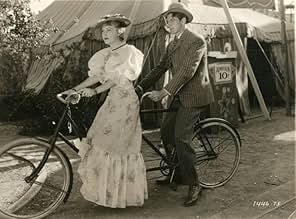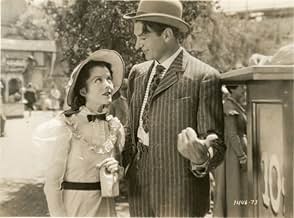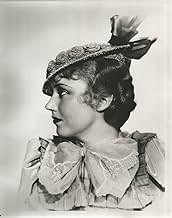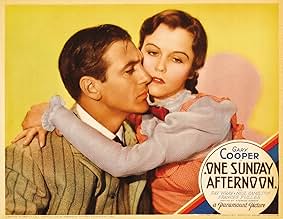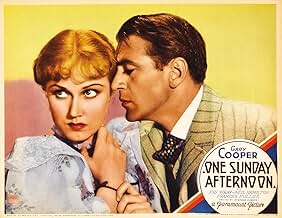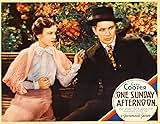Middle-aged dentist Biff Grimes reminisces about his unrequited love for beautiful Virginia Brush and her husband Hugo, his ex-friend, who betrayed him.Middle-aged dentist Biff Grimes reminisces about his unrequited love for beautiful Virginia Brush and her husband Hugo, his ex-friend, who betrayed him.Middle-aged dentist Biff Grimes reminisces about his unrequited love for beautiful Virginia Brush and her husband Hugo, his ex-friend, who betrayed him.
- Director
- Writers
- Stars
Clara Blandick
- Mrs. Brush
- (scenes deleted)
Bobby Barber
- Man in Greased Pig Contest
- (uncredited)
James Bradbury Jr.
- Dink's Chum
- (uncredited)
Ed Brady
- Pig Contest Emcee
- (uncredited)
James P. Burtis
- Dink Hoops
- (uncredited)
A.S. 'Pop' Byron
- O'Reilly - Phoenix Foreman
- (uncredited)
Jack Rube Clifford
- Mr. Johnson - Watchman
- (uncredited)
Robert Homans
- Officer Charlie Brown
- (uncredited)
Carmencita Johnson
- Priscilla
- (uncredited)
Gus Leonard
- Musician
- (uncredited)
Jim Mason
- Dink's Chum
- (uncredited)
Russ Powell
- Tuba Player
- (uncredited)
- Director
- Writers
- All cast & crew
- Production, box office & more at IMDbPro
Featured reviews
One Sunday Afternoon is an example of what movie studios used to do with total professionalism - in the space of a few months, use a Broadway play as the template to make a movie. One Sunday Afternoon opened on Broadway on February 15, 1933; the movie went into production at Paramount in May 1933 and was released on September 1, 1933, while the original play was still at the Little Theater. Grand Hotel is another example of a Broadway play becoming a movie in a relatively short time.
Warner Bros. turned the play Arsenic and Old Lace into a movie after the play was a hit on Broadway, but by then, the play's producer knew the score. One Sunday Afternoon closed on Broadway in November 1933, a closure that probably was sped up by competition from the movie. As a condition of the sale of movie rights, the movie Arsenic and Old Lace, made in 1941, could not be released until the play it was based on closed on Broadway. That was in 1944.
Back to One Sunday Afternoon, the movie. As with many movies made during the Depression, this movie has a grim edge to it. Although things work out, all the leads have rough times of it. Fay Wray is cast against her usual role, playing a mean person. Gary Cooper is no hero, just a guy who gets jammed by people he trusted. Frances Fuller (Amy Lind) does not change much during the movie, she always believes in Biff Grimes (Cooper). She made one more movie in Hollywood as a lead character before vanishing until some television roles over 15 years later, so she did not have a chance to be typecast.
The end result of Paramount's production is a movie that shows what a struggle life is, and how people can change along the way. Instead of cheerful memories of a time gone by, which the title implies, you have scenes such as Gary Cooper returning from prison to meet Amy in Avery's Park, an amusement park that closed and fell into disrepair while Cooper was in prison.
One Sunday Afternoon is a slice of real life, a movie that deals with hard times for some ordinary (but very good looking) people.
Warner Bros. turned the play Arsenic and Old Lace into a movie after the play was a hit on Broadway, but by then, the play's producer knew the score. One Sunday Afternoon closed on Broadway in November 1933, a closure that probably was sped up by competition from the movie. As a condition of the sale of movie rights, the movie Arsenic and Old Lace, made in 1941, could not be released until the play it was based on closed on Broadway. That was in 1944.
Back to One Sunday Afternoon, the movie. As with many movies made during the Depression, this movie has a grim edge to it. Although things work out, all the leads have rough times of it. Fay Wray is cast against her usual role, playing a mean person. Gary Cooper is no hero, just a guy who gets jammed by people he trusted. Frances Fuller (Amy Lind) does not change much during the movie, she always believes in Biff Grimes (Cooper). She made one more movie in Hollywood as a lead character before vanishing until some television roles over 15 years later, so she did not have a chance to be typecast.
The end result of Paramount's production is a movie that shows what a struggle life is, and how people can change along the way. Instead of cheerful memories of a time gone by, which the title implies, you have scenes such as Gary Cooper returning from prison to meet Amy in Avery's Park, an amusement park that closed and fell into disrepair while Cooper was in prison.
One Sunday Afternoon is a slice of real life, a movie that deals with hard times for some ordinary (but very good looking) people.
"One Sunday Afternoon" is a charming and little-known piece of Americana, the first filmization of James Hagan's play about a dentist named Biff Grimes (Gary Cooper) who has long tried to revenge on his old friend Hugo Barnstead (Neil Hamilton) for marrying Grimes' girl Virginia (Fay Wray) and leaving him with the charming and devoted Amy (Frances Fuller). The film opens with Grimes and his pal Snappy Downer (Rascoe Karns) singing and drinking. Barnstead shows up Grimes' home to get this tooth pulled. Grimes puts him on nitrous oxide gas, and then the film dissolves into a flashback as Grimes remembers their past, providing him with a motive for revenge.
"One Sunday Afternoon" was remade in 1941 by Warner Bros. and Raoul Walsh into a timeless and unforgettable classic, "The Strawberry Blonde", starring James Cagney, Olivia de Havilland, and Rita Hayworth. Walsh's version is infinitely superior, but "One Sunday Afternoon" is worthwhile for Gary Cooper's superb performance.
"One Sunday Afternoon" was remade in 1941 by Warner Bros. and Raoul Walsh into a timeless and unforgettable classic, "The Strawberry Blonde", starring James Cagney, Olivia de Havilland, and Rita Hayworth. Walsh's version is infinitely superior, but "One Sunday Afternoon" is worthwhile for Gary Cooper's superb performance.
One Sunday Afternoon (OSA) shares an interesting history with its one theatrical predecessor and two subsequent movie remakes (one of which was retitled The Strawberry Blond). The primary source for this group of three films is a Broadway play that ran in 1933 for nine months and 322 performances. The play by James Hagan involved the various relationships (and their complications) of its hero---Biff Grimes. The feisty young mail-order dentist (originally played on the stage by veteran character actor/leading man Lloyd Nolan) went through a number of trials and travails, from unrequited love to betrayal by a "friend," until all the problems are satisfactorily resolved with a happy ending to cap the sentimental and nostalgic story.
In an unusual development while the play was still in its original 1933 Broadway run, OSA was acquired by Paramount Studio and produced as a feature movie that starred Gary Cooper as Grimes. On the face of it, the Grimes role would seem to be outside of both Cooper's usual screen image and also his range as an actor---and this appears evident from a viewing of the film. In it, Cooper comes across as both hot tempered and somewhat edgy-----and lacks the unique charm that he generally brought to so many of his later memorable screen roles. OSA is one of the very few movies made by Cooper during this period that was unsuccessful at the box office. It also featured a lovely performance by the winsome, petite and little-known Frances Fuller as Amy Lind, matinee idol Neil Hamilton as Hugo the "friend" and veteran supporting actor Roscoe Karns as Biff's sidekick.
Notwithstanding the financial failure of the Cooper film, Warner Brothers acquired the property in the late 1930s. It ultimately came to the attention of director Raoul Walsh and actress Olivia de Havilland, and both expressed an interest in remaking OSA now retitled The Strawberry Blond (TSB). The featured role of Virginia Brush, who was the attractive young woman Grimes loved from afar (played by Fay Wray in the Cooper version) was slated for contract player Ann Sheridan. She promptly went on suspension to avoid doing the part, so WB then borrowed the little known (at the time) starlet Rita Hayworth from Columbia Pictures to play the title Strawberry Blond character. It turned out to be a pivotal positive development in Hayworth's long career, as well as one of de Havilland's most endearing and fondly remembered portrayals as the loving and loyal Amy Lind. WB wisely cast James Cagney as the excitable yet good natured Biff Grimes, who then astonished many people with his fine part comic/part dramatic star turn. Jack Carson completed the lead cast as Biff's unscrupulous "friend." TSB was engaging, appealing and rather sweet in its own special way. It remains as a lovely entertaining film to this very day.
For whatever reason, Walsh was induced to remake TSB as a musical in 1948 with Dennis Morgan as Biff, Don DeFore as the "friend," Janis Paige as the Strawberry Blond and Dorothy Malone as Amy. Like the earlier Cooper version, OSA the musical did poorly both critically and commercially. It is reminiscent of what happened to acclaimed director Frank Capra when he, too, decided to remake one of his great early classics Lady for a Day in 1966. The resulting film now titled A Pocketful Of Miracles did so badly at the box office that it spelled the end of Capra's career as a major film director. It really is quite difficult for the lightning of success to strike the same property twice.
Here is a piece of trivia that you may not know. The Hagan play was once translated into Yiddish and renamed One Sabbath Afternoon! The Yiddish version was later revived in 1939, and it received high praise from the New York Times during its Gotham run! Perhaps this may be viewed as an exception to the rule previously cited on the above paragraph!
In an unusual development while the play was still in its original 1933 Broadway run, OSA was acquired by Paramount Studio and produced as a feature movie that starred Gary Cooper as Grimes. On the face of it, the Grimes role would seem to be outside of both Cooper's usual screen image and also his range as an actor---and this appears evident from a viewing of the film. In it, Cooper comes across as both hot tempered and somewhat edgy-----and lacks the unique charm that he generally brought to so many of his later memorable screen roles. OSA is one of the very few movies made by Cooper during this period that was unsuccessful at the box office. It also featured a lovely performance by the winsome, petite and little-known Frances Fuller as Amy Lind, matinee idol Neil Hamilton as Hugo the "friend" and veteran supporting actor Roscoe Karns as Biff's sidekick.
Notwithstanding the financial failure of the Cooper film, Warner Brothers acquired the property in the late 1930s. It ultimately came to the attention of director Raoul Walsh and actress Olivia de Havilland, and both expressed an interest in remaking OSA now retitled The Strawberry Blond (TSB). The featured role of Virginia Brush, who was the attractive young woman Grimes loved from afar (played by Fay Wray in the Cooper version) was slated for contract player Ann Sheridan. She promptly went on suspension to avoid doing the part, so WB then borrowed the little known (at the time) starlet Rita Hayworth from Columbia Pictures to play the title Strawberry Blond character. It turned out to be a pivotal positive development in Hayworth's long career, as well as one of de Havilland's most endearing and fondly remembered portrayals as the loving and loyal Amy Lind. WB wisely cast James Cagney as the excitable yet good natured Biff Grimes, who then astonished many people with his fine part comic/part dramatic star turn. Jack Carson completed the lead cast as Biff's unscrupulous "friend." TSB was engaging, appealing and rather sweet in its own special way. It remains as a lovely entertaining film to this very day.
For whatever reason, Walsh was induced to remake TSB as a musical in 1948 with Dennis Morgan as Biff, Don DeFore as the "friend," Janis Paige as the Strawberry Blond and Dorothy Malone as Amy. Like the earlier Cooper version, OSA the musical did poorly both critically and commercially. It is reminiscent of what happened to acclaimed director Frank Capra when he, too, decided to remake one of his great early classics Lady for a Day in 1966. The resulting film now titled A Pocketful Of Miracles did so badly at the box office that it spelled the end of Capra's career as a major film director. It really is quite difficult for the lightning of success to strike the same property twice.
Here is a piece of trivia that you may not know. The Hagan play was once translated into Yiddish and renamed One Sabbath Afternoon! The Yiddish version was later revived in 1939, and it received high praise from the New York Times during its Gotham run! Perhaps this may be viewed as an exception to the rule previously cited on the above paragraph!
Gary Cooper plays a dentist named Biff whose former friend Hugo (Neil Hamilton) stabbed him in the back many times when they were younger and even wound up with the woman Biff loved, played by Fay Wray. Now Hugo has come to Biff to have a tooth pulled. While Hugo is sedated, Biff flashes back to how things went down between the two men. Good movie but later remake called The Strawberry Blonde is better. That one stars James Cagney, Olivia de Havilland, and Rita Hayworth. It's lighter and funnier than this one, which is dark in parts. Cooper's great here and his support is fine but I'm not sure Fay Wray was quite right for her part. This is yet another movie from the early '30s where Neil Hamilton played a man that women go crazy over. Something must have been in the water back then because I just don't see any woman preferring him to Gary Cooper. I remember another movie where he was picked over Clark Gable. Insane!
The film begins in a dental office, as the dentist, Biff (Gary Cooper), talks to a friend (Roscoe Karns) about this relationship with Hugo (Neil Hamilton) back in the Gay 90s when they had been friends. This is instigated when Hugo comes to the office and sees Biff for the first time in decades. Hugo needs a tooth pulled and while he is sedated with gas, Biff recalls their past when they were both ardently pursuing a pretty young lady (Fay Wray)--while pretty much ignoring her more plain but much sweeter friend (Frances Fuller). Through the course of the film, Hugo stabs his supposed friend in the back again and again.
This movie is the original--with remakes in 1941 (THE STRAWBERRY BLONDE) and 1948 (ONE Sunday AFTERNOON). While I rarely prefer remakes, I must say that the 1941 version is much more watchable and fun. Part of this is because the 1933 version is so very, very quiet--with very little music to help set the mood. Also, the whole mood of the 1933 film is more somber and the story a bit more direct and "bare bones" in style. Also, while I like Gary Cooper films, for a comedy like this one, Cagney was better and the supporting actors he had were also superior and gave THE STRAWBERRY BLONDE so much more energy. This film is still well worth seeing, but the 1941 film has a more polished plot, better characters and the full Warner Brothers package (wonderful and first-rate production values) that this Paramount film lacks.
This movie is the original--with remakes in 1941 (THE STRAWBERRY BLONDE) and 1948 (ONE Sunday AFTERNOON). While I rarely prefer remakes, I must say that the 1941 version is much more watchable and fun. Part of this is because the 1933 version is so very, very quiet--with very little music to help set the mood. Also, the whole mood of the 1933 film is more somber and the story a bit more direct and "bare bones" in style. Also, while I like Gary Cooper films, for a comedy like this one, Cagney was better and the supporting actors he had were also superior and gave THE STRAWBERRY BLONDE so much more energy. This film is still well worth seeing, but the 1941 film has a more polished plot, better characters and the full Warner Brothers package (wonderful and first-rate production values) that this Paramount film lacks.
Did you know
- TriviaWhen Biff asks for a package of Sen-Sen at the pool hall, audiences at the time would have known he was buying a popular brand of breath freshener. It was produced from the late 1800s until 2013.
- GoofsAll entries contain spoilers
- Quotes
Virginia 'Virgie' Brush Barnstead: How'd you know my name's Virginia?
Dr. Lucius Griffith 'Biff' Grimes: That's for me to know and you to find out.
- ConnectionsVersion of La blonde framboise (1941)
- SoundtracksOn a Sunday Afternoon
(1902) (uncredited)
Music by Harry von Tilzer
Lyrics by Andrew B. Sterling
Played during the opening credits and at the end
Details
- Runtime
- 1h 25m(85 min)
- Color
- Aspect ratio
- 1.37 : 1
Contribute to this page
Suggest an edit or add missing content



